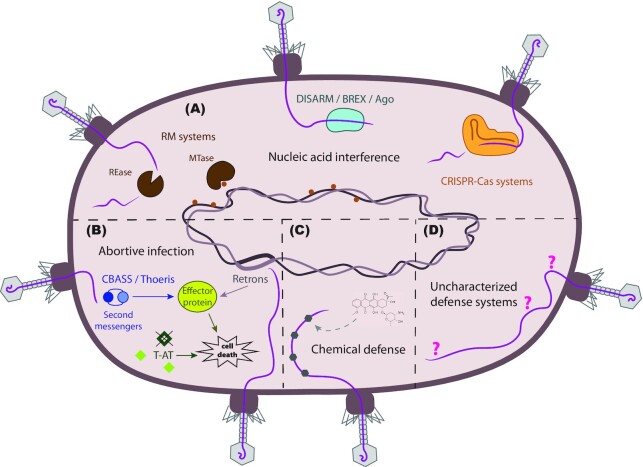Figure 2.
Host phage defense systems. (A) Multiple defense systems act via nucleic acid interference. R-M systems are generally composed of an MTase that methylates endogenous DNA to distinguish it from exogenous DNA, and of an REase that cleaves the exogenous, non-methylated DNA. DISARM interacts with phage DNA to prevent its circularization, thereby blocking its replication or lysogeny. BREX or Ago systems interact with phage DNA and prevent it from replicating without necessarily cleaving it. CRISPR-Cas systems are known as the adaptive immune system of bacteria. The CRISPR array contains sequences of foreign origin that can be transcribed and processed to act as a guide for the Cas endonuclease, which recognizes and cleaves said sequences upon reentry into the bacteria. (B) Abortive infection comprises a series of mechanisms that lead to bacterial cell suicide. An example in which this can happen is through an imbalance in the concentration of toxins and antitoxins in a cell. Another example is through the action of effector proteins that might get activated directly, like in the case of retrons, or via second messengers, like in the case of CBASS or Thoeris. These effector proteins can lead to cell death in several ways, for instance through inner membrane degradation (CBASS) or through NAD depletion (Thoeris). (C) Bacteria can produce secondary metabolites such as daunorubicin (depicted) that intercalate phage DNA and prevent it from circularizing and replicating. (D) Analysis of genetic defense islands has recently led to the discovery of a series of defense systems that are yet to be fully characterized. These include: Hachiman, Shedu, Gabija, Septu, Lamassu, Zorya, Kiwa, Druantia, Wadjet, RADAR, DRTs, AVAST and pVips, among others.

